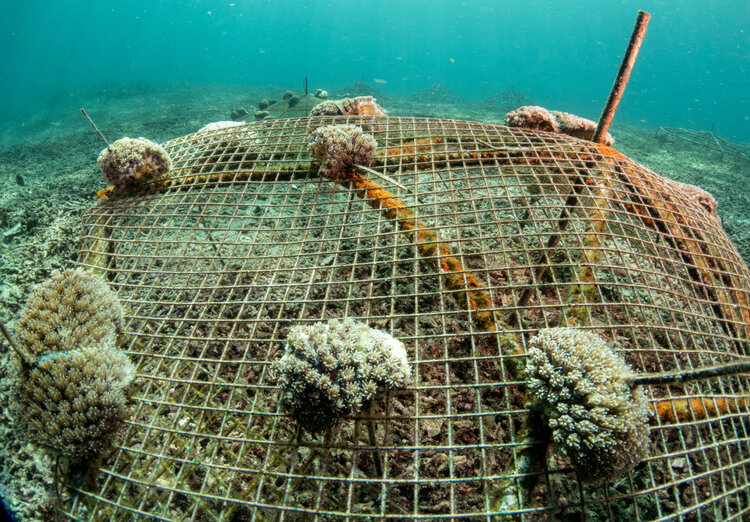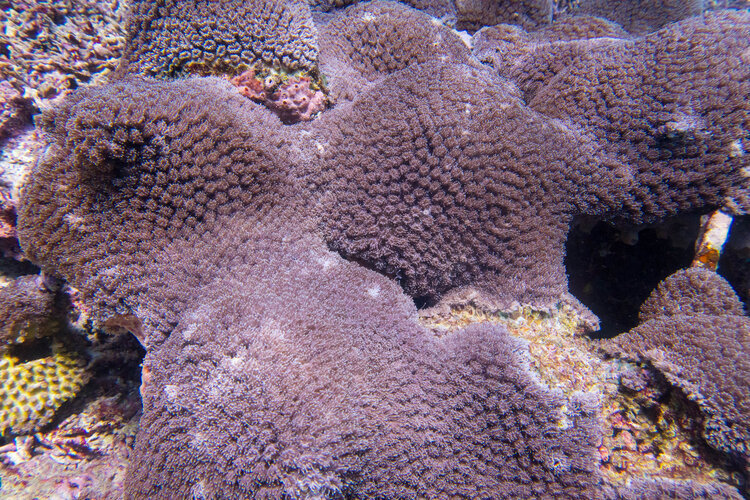Microfragmentation - Techniques for Growing Massive Corals
Massive corals have been found to grow at elevated rates through a process called micro-fragmentation. Donor corals (usually boulder or massive species) are cut into small fragments of only a few coral polyps in size, then placed in close proximity to one another which significantly stimulates coral growth rates (Page et al. 2018).
In 2018 we found a dislodged Galaxea coral colony while recovering a fishing net off the reef. We then cut the coral fragments to smaller size using hammer and chisel so that they could be transplanted upon coral frames.
Micro-fragmentation is particularly useful for propagating massive coral species that grow more slowly. As we can achieve coverage of these corals by allowing them to encrust over structures that we place on the reef. For a field application of this technique, coral fragments from the same parent can be transplanted in close proximity. Being of the same genetic stock (or parent colony) the small corals will recognize one another and over time grow and fuse together into a larger coral colony.
We attempted this technique using Galaxea which are a commonly found massive coral species in the Nusa Penida area. Galaxea corals tend to be encrusting, massive or submassive. Corallites are cylindrical and have obvious large protruding septa that rise above the skeleton and tentacles – having a spikey appearance. Galaxea is a common coral along the reef slope with relatively high ability to withstand environmental stresses.
Shortly after transplanting coral fragments in December 2018.
Same coral frame in June 2021 - 2.5 years after planting on the reef.
Field applications used by practitioners sometimes need to be adapted from lab techniques. Microfragmenting corals was a technique developed for labs wherein a diamond band saw is recommended to make precise cuts in thick coral skeleton, and then fragments are mounted on tiles and allowed to grow for several months in a wet-lab before being outplanted or fragmented again (Page et al. 2018). However we have adapted this technique by fragmenting to a size achievable using underwater tools (hammer & chisel) and then securing fragments originating from the same colony in close proximity to one another so that they may fuse into a large continuous colony.





